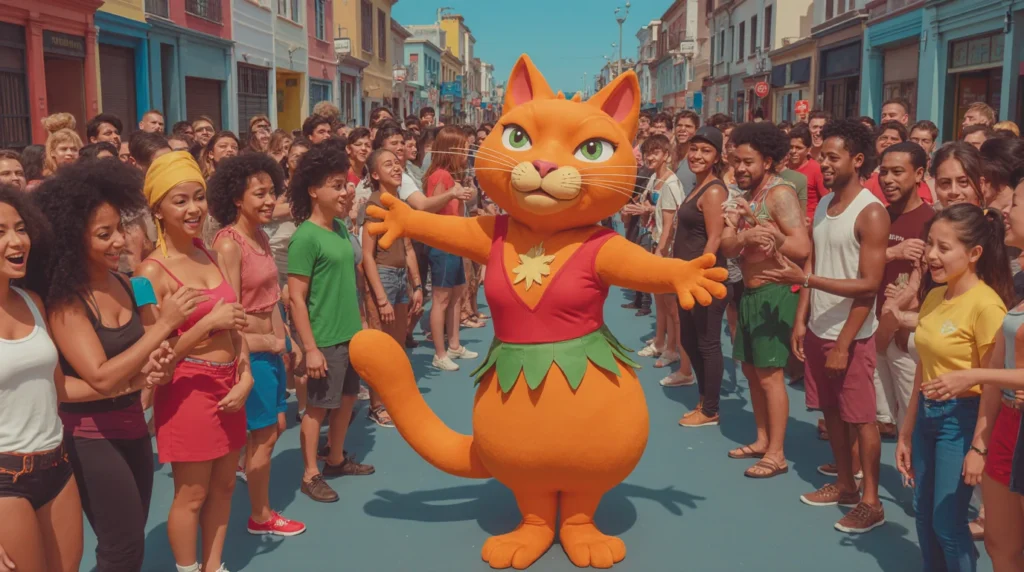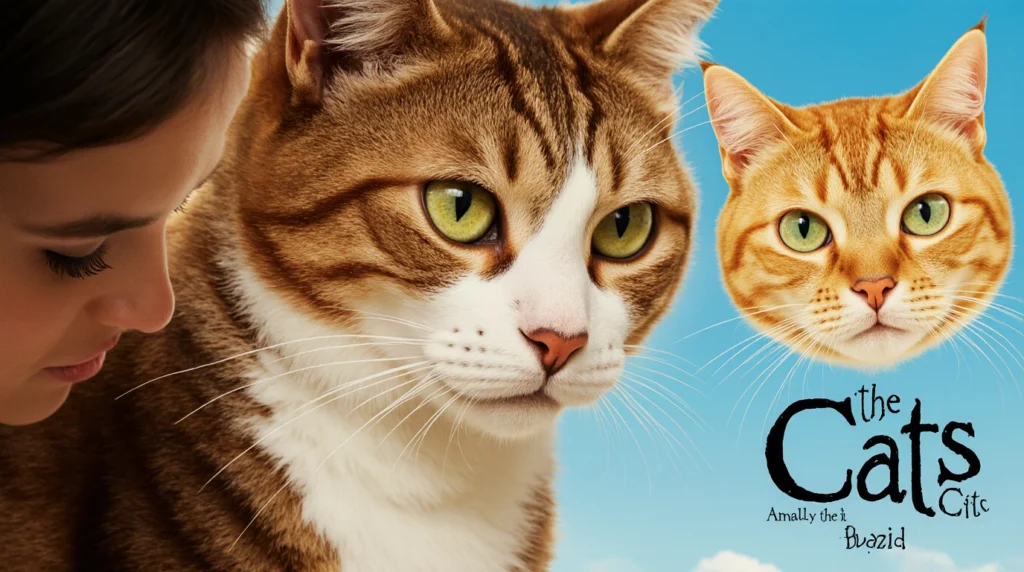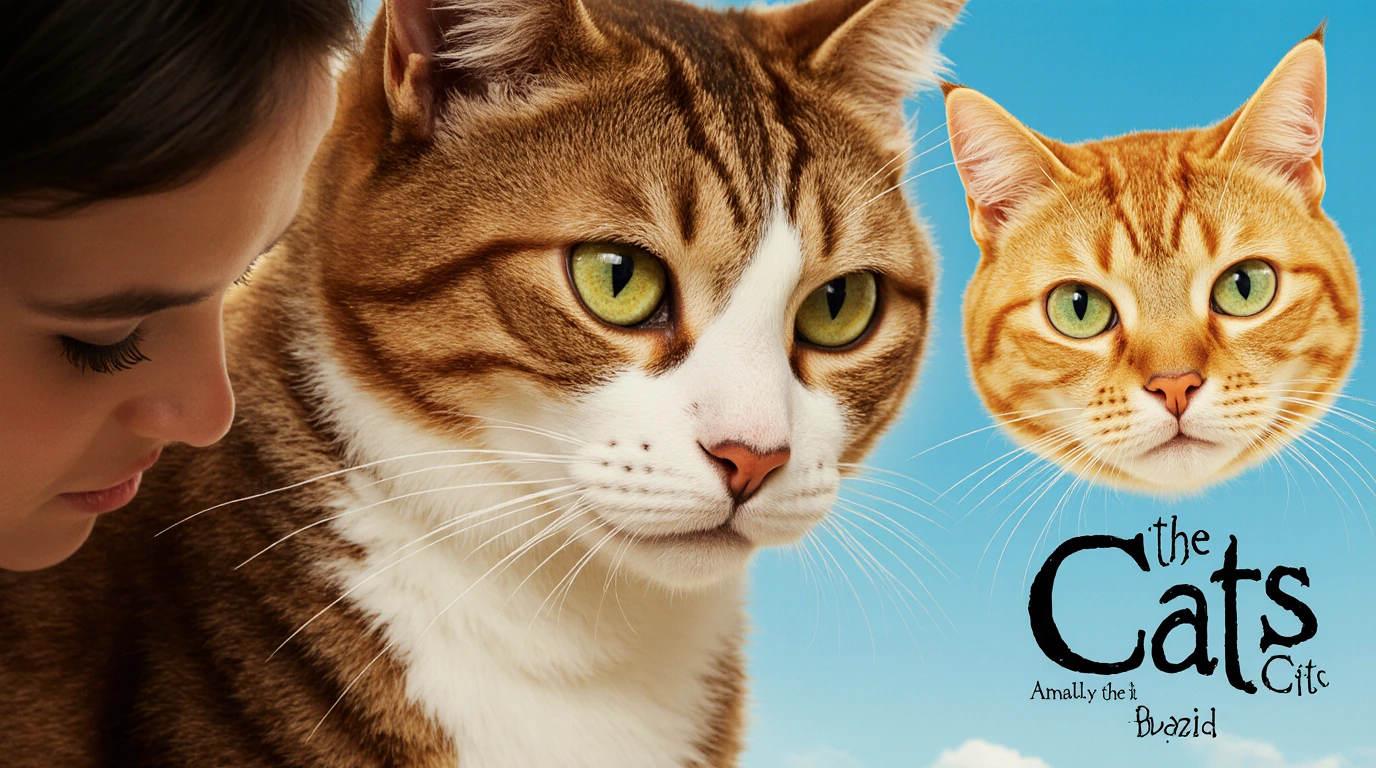There’s a moment — somewhere between the third slow blink of a digital fur-covered cat and the 11th inexplicable musical number — when you realize: this was never going to land the same way everywhere. The Cats movie, a surreal Broadway-to-Hollywood spectacle already polarizing in English-speaking markets, took an even more peculiar turn when it arrived in Brazil.
Brazilian audiences know musicals. But they know them through a lens of samba-soaked realism, emotionally grounded narratives, and stage traditions deeply tied to rhythm and social commentary. So when Cats padded onto Brazilian screens — with no clear plot, hyper-stylized CGI, and a chorus of meowing metaphors — reactions ranged from polite confusion to outright bewilderment.
This article isn’t another rehash of the Cats movie’s global reviews. Instead, we’ll explore a rarely examined cultural question: what happens when Broadway’s weirdest export tries to purr its way into Brazil’s music-loving heart? From pre-release buzz to post-credits silence, we’ll dig into local reactions, cultural mismatches, and what the movie’s fate in Brazil might tell us about how musicals translate — or don’t — across borders.
By the end, you might find yourself rethinking how art travels. Or at least, why even a cat needs a passport sometimes.
Table of Contents
Why the Cats Movie Confused (and Intrigued) Brazilian Audiences
Let’s be honest: Brazilian audiences are no strangers to musical drama. They’ve embraced everything from the soulful weight of Ópera do Malandro to the high-energy fusion of Tim Maia: Vale Tudo. But when the Cats movie landed in Brazilian theaters, something didn’t quite click. Or maybe it clicked too hard — in the wrong direction.
A Collision of Expectations and Eccentricity
Brazilian viewers walked into Cats expecting… well, something. Maybe a story. Maybe emotional arcs. Maybe even a message. What they got instead was a blur of anthropomorphic feline gestures, disjointed songs, and a plot that felt more like a fever dream than a narrative.
Why the disconnect? Brazilian entertainment culture — especially when it comes to musicals — tends to anchor itself in storytelling that’s either socially grounded or emotionally transparent. From telenovelas to stage productions, there’s a strong expectation of coherence and catharsis. Cats, meanwhile, offers neither.
The Unspoken Cultural Gap
Part of the confusion stems from an under-discussed factor: Cats was never a story-first musical. Even in its stage form, it relied on visual spectacle and abstract lyricism over plot. That’s a big gamble in a country where audiences crave emotional resonance and cultural context. Critics noted the film’s lack of human touch, a detail that felt especially jarring in Brazil, where even animated films are judged by their heart, not just their pixels.
Some younger audiences, especially those tuned into global meme culture, found it ironically delightful. But for most, it was a visual labyrinth — hard to follow, harder to feel.
Why didn’t the Cats movie resonate with Brazilian audiences?
The Cats movie didn’t resonate because it lacked narrative clarity and emotional grounding — two elements that are core to Brazil’s musical and dramatic traditions. Its surreal tone and unclear stakes left many viewers feeling disconnected rather than enchanted.
Brazil’s Musical Theater Scene Before Cats: A Legacy of Rhythm and Realism
Before Cats tiptoed into Brazilian cinemas, the country already had a long, pulsing love affair with musicals — just not the Broadway kind. Brazilian musical theater evolved in its own key: syncopated, political, grounded in lived experience. If Broadway gave us fantasy cats and flying nannies, Brazil gave us samba singers wrestling with injustice, favelas turned into stages, and rhythms born from resistance.
A Tradition Rooted in Story and Soul
Brazilian musicals — from Orfeu da Conceição to Besouro Cordão de Ouro — carry a through-line: music in service of storytelling. Every drumbeat, every lyric, aims to move the plot, not just dazzle the senses. This tradition stems not just from aesthetic taste, but from necessity. For decades, Brazilian theater operated with limited resources and under censorship regimes. Every line had to count. Every movement had to mean something.
In that context, Cats — a spectacle famous for plotless sequences and interpretive dance — landed like a beautiful alien. Intriguing, yes. But out of sync.
Rhythm Over Abstraction
The Brazilian ear is tuned differently. Samba, forró, MPB — these aren’t just musical genres; they’re narrative devices, often used to tell stories of community, love, survival, and change. When musicals like Cats arrive with no emotional spine and cryptic metaphors, they don’t just challenge expectations — they risk sounding hollow.
Which isn’t to say Brazilians rejected Cats because it was different. They’ve embraced Phantom of the Opera and Les Misérables before. The issue was deeper: Cats didn’t try to meet the audience halfway. It asked viewers to decode it, without giving them a reason to try.
What makes Brazilian musical theater unique compared to Broadway?
Brazilian musical theater emphasizes rhythm, emotional realism, and socio-political themes. Unlike Broadway’s abstract spectacles, Brazilian productions focus on clarity, cultural identity, and stories that reflect everyday life.
When Broadway Goes Surreal: Was Cats Too Weird for Brazil?
There’s experimental… and then there’s Cats. Even for seasoned theatergoers, the Cats movie toes a bizarre line between musical expression and full-blown fever dream. But while surrealism isn’t new to Brazilian art — think Tropicália or early cinema novo — the form it took in Cats felt untethered, almost alien.
Surreal, Yes — But to What End?
Brazilian audiences are no strangers to magical realism. They’ve welcomed floating saints, singing spirits, and dancing ghosts on screen and stage. The difference? In Brazilian storytelling, the surreal is grounded in purpose. It disrupts reality to reveal a deeper truth.
In Cats, however, the surrealism seems self-referential — aesthetic for its own sake. There’s no clear why. Just endless fur, fog, and feline flirtation. The result? Viewers weren’t just confused; they were emotionally disconnected. No plot to follow, no character arc to root for, no metaphor that made cultural sense.
“Too Weird” or Just “Too Western”?
There’s also the matter of tone. Cats leans into a particularly Anglo-British absurdism — stylized, whimsical, and emotionally muted. That can feel cold in a Brazilian context, where artistic weirdness is typically wrapped in heat — passion, irony, or defiance. Cats felt like it wandered in from a different planet, one where narrative didn’t matter and vibe was everything.
For many Brazilian viewers, it wasn’t just weird. It was weird without rhythm, and that’s a rhythm they couldn’t dance to.
Is surrealism in Cats the reason it didn’t connect with Brazilian viewers?
Yes — partly. Surrealism isn’t the problem in itself. But the kind of surrealism in Cats lacked emotional depth and cultural grounding, making it hard for Brazilian audiences to relate or care.
Critical Reception of the Cats Movie in Brazil
The press wasn’t kind — but it wasn’t cruel either. The Cats movie arrived in Brazil with a sort of fascinated apprehension. Reviewers seemed torn between professional obligation and personal disbelief. The result? A uniquely Brazilian mix of dry humor, aesthetic analysis, and… a little secondhand embarrassment.
What Brazilian Critics Really Said
Upon release, major outlets like O Globo, Folha de S.Paulo, and CinePOP treated Cats with the cautious tone typically reserved for experimental performance art at 2 a.m. Some compared it to a failed Cirque du Soleil sketch. Others tried — valiantly — to explain the Jellicle Ball to audiences with zero T.S. Eliot context.
One reviewer from AdoroCinema wrote:
“There’s something hypnotic in its absurdity — but that doesn’t mean it’s good. You don’t understand what you’re watching, and yet you keep watching. Like a bus accident… choreographed.”
The criticism wasn’t just about the weirdness. It was about emotional incoherence. Many felt the film had no stakes, no intimacy. Brazilian cinema is used to pulling heartstrings — even musicals like 2 Filhos de Francisco manage to weave pain, hope, and melody into a cohesive narrative. Cats, in contrast, felt like emotional white noise.
The Meme Effect
Still, the film didn’t go quietly. On Brazilian Twitter, Cats became a meme machine. Users posted reactions like: “Achei que estava bêbado, mas era só o filme mesmo.” (“I thought I was drunk, but it was just the movie.”) Others playfully demanded subtitles for the subtitles.
In a strange way, Cats earned a kind of ironic cult following — not because it was loved, but because it was too bizarre to forget.
How did Brazilian critics respond to the Cats movie?
Brazilian critics largely panned the Cats movie, citing its confusing tone, lack of narrative, and emotional flatness. However, many also acknowledged its bizarre charm and the sheer novelty of its presentation — making it more meme than masterpiece.
From Stage to Screen: Did Cats Lose Its Magic in Translation?
On stage, Cats was weird — but at least it was live. You could feel the dancers’ sweat, the theatrical lighting, the choreography breathing on beat. On screen? That same weirdness became uncanny. Sterile. Almost robotic. And for Brazilian audiences used to the visceral pulse of live performance, the Cats movie felt like an imitation of magic, not the thing itself.
Theater Is Physical — Film Is Emotional
There’s a built-in intimacy to Brazilian theater. Audiences engage in a call-and-response rhythm — laughter, sighs, whispers. You don’t just watch a show; you live inside it. When Cats transitioned to film, it lost that shared electricity. Worse, it replaced it with digital fur and CGI feet that sometimes didn’t touch the ground.
Brazilian audiences noticed. They didn’t just dislike the movie’s aesthetic; they felt disrespected by the emotional downgrade. All that technical perfection, and yet… no feeling.
The Global vs Local Disconnect
Here’s the paradox: Cats tried to globalize a niche stage experience, but in doing so, lost both the niche and the experience. The result was a glossy, hyper-processed musical that didn’t speak the language of its new audience — not in Portuguese, and not in tone.
By contrast, successful musical films in Brazil (Elis, Dois Filhos de Francisco) double down on emotion first. They may be less polished, but they’re rich with soul. That’s the trade-off Cats didn’t make. And it shows.
Why did Cats lose its theatrical impact when adapted to film?
Because film demands emotional coherence, not just spectacle. Cats prioritized digital style over human connection — a shift that stripped away what little magic it had, especially for audiences who value story-driven performance.

What the Cats Movie Reveals About Brazilian Pop Culture Preferences
Sometimes a flop says more than a hit. The Cats movie, with its tangled visuals and elliptical narrative, didn’t just confuse Brazil — it exposed a deep truth about what the country wants from its pop culture: connection, clarity, and catharsis.
Brazil Loves Musical Stories — But They Need Heart
Musicals aren’t new to Brazil. From childhood classics like Xuxa films to stage adaptations of The Lion King, Brazilians enjoy song-driven stories. But there’s a key difference: they gravitate toward music that enhances emotion, not obscures it.
Think of Tim Maia’s biopic, or the rise of sertanejo songs in mainstream TV dramas. These aren’t passive experiences — they tap into grief, joy, longing. Cats didn’t do that. It offered a puzzle with no emotional reward.
Aesthetic vs Emotional Payoff
Brazilian pop culture has always walked a fine line between escapism and groundedness. Telenovelas can be melodramatic, but they rarely lose touch with real emotional stakes. Audiences are willing to suspend disbelief — but only if you give them something to believe in.
With Cats, the aesthetic gamble felt like a broken contract. If you’re going to make us watch a two-hour poem about reincarnated alley cats, at least make us feel something along the way.
Genre Preferences Matter
Genres like fantasy, sci-fi, or high-concept musicals have historically struggled in Brazil unless paired with human stakes. This isn’t a lack of imagination — it’s a hunger for narrative gravity. Cats, with its surrealism and absence of a moral center, never gave Brazilian viewers the emotional handhold they needed.
What does the failure of Cats reveal about Brazilian audiences?
It shows that Brazilian audiences value emotional clarity and connection in storytelling — especially in musicals. Abstract or surreal formats may work, but only when they carry a strong emotional thread and culturally resonant themes.

Frequently Asked Questions About Cats and Brazil
Did the Cats movie have a theatrical release in Brazil?
Yes, the Cats movie had a theatrical release in Brazil in early 2020, distributed nationwide across major cinema chains like Cinemark and Kinoplex. However, the release was low-key and short-lived due to poor word-of-mouth and lukewarm interest from audiences.
How did the Cats movie perform at the Brazilian box office?
Not well. While official numbers weren’t widely publicized, box office tracking sites indicated that Cats opened to weak ticket sales and quickly dropped from most theater schedules. Compared to international releases like Frozen II or Jumanji, its performance was negligible.
Are musicals like Cats popular in Brazil?
Musicals are popular in Brazil, but typically those with strong emotional narratives or cultural ties — such as biopics (Elis), historical musicals (Cazuza), or adaptations with familiar story arcs. Cats, with its abstract structure and lack of emotional entry points, didn’t align with Brazilian preferences.
Was Cats dubbed or subtitled in Brazil?
Both versions were available. Most screenings featured Portuguese subtitles, while some cities offered dubbed showings. However, even with language adaptation, the film’s abstract style and surreal dialogue remained a barrier for many viewers.
Final Thoughts: Can Musicals Like Cats Thrive in Brazil’s Entertainment Scene?
The short answer? Not as they are.
The Cats movie wasn’t just a box office misfire in Brazil — it was a case study in cross-cultural mismatch. It showed that while Brazilian audiences are open to fantasy and spectacle, they still want something to feel, something to follow, and most importantly, something to hold onto emotionally. Surrealism alone won’t cut it.
But here’s the twist: Brazil isn’t allergic to weirdness. It’s just particular about the kind. Films like O Auto da Compadecida or Bacurau prove that Brazilian viewers can handle surreal and genre-defying stories — as long as they speak a shared emotional language. Cats, for all its ambition, skipped the translation step.
That doesn’t mean stylized musicals are doomed in Brazil. It just means they’ll have to try harder. Anchor the absurd in real emotion. Let the music move plot, not replace it. And maybe, just maybe, rethink the whole “furry humanoid jazz cats floating into the afterlife” thing.
Brazil is ready for bold musicals. But boldness alone isn’t enough. You need rhythm. You need soul. And above all, you need a story worth singing.

